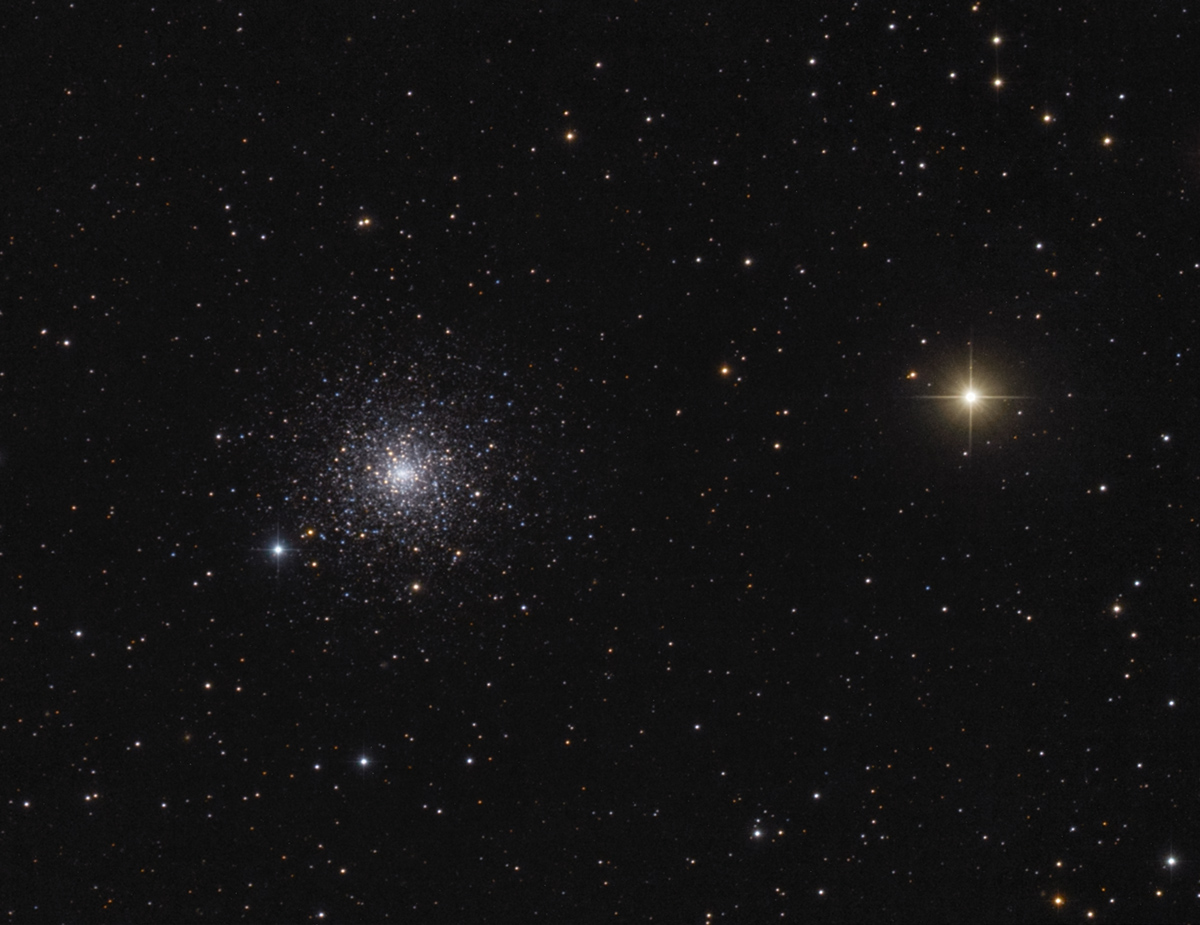
| HOME |
MESSIER 30 GLOBULAR CLUSTER
CAPRICORNIUS - (ra: 21:40.2 / dec -23:11)
CLICK IN THE IMAGE FOR A HIGH RESOLUTION VIEW
September 2012, - Home Backyard Martínez, Argentina
DATA
TYPE: Globular Cluster
VISUAL BRIGHTNESS: 7.2
APPARENT DIAMETER: 12 arc minutes
DISTANCE: 26.100 light years
IMAGE INFORMATION
SCOPE: ORION OPTICS UK 6" f5 Newtonian
CAMERA: QSI 583 WS
GUIDING: LodeStar in Synta 70/400 refractor / PHD Guiding
FILTERS: Baader LRGB Set
SKY CONDITIONS: Urban Skies.
EXPOSURES: LRGB (90,30,30,30) for a total exposure time of 3 hours
PROCESSING: Images Plus / Photoshop CS2 - no darks applied.
OBJECT DESCRIPTION AND IMAGE SESSION
Globular cluster Messier 30 covers a distance of about 90 light years across, and appears to us under an angular diameter of about 12.0 arc minutes. It is fairly dense (as its concentration class V indicates), and a fine object in even small telescopes. Its brightest red giant stars are about of apparent visual magnitude 12.1, its horizontal branch giants at magnitude 15.1.The core of M30 exhibits an extremely dense stellar population, and has undergone a core collapse, similar to at least 20 other of the 150 globulars in the Milky Way Galaxy, including M15, M70, and possibly M62.
M30 was one of the original discoveries of Charles Messier, who catalogued it on August 3, 1764 and like most of his globulars, described it as round nebula, containing no stars. It was first resolved by William Herschel around 1784. (*)
At the right of M30 we have 41 Capricorni shining in magnitude 5.25. The star is a good reference for observes to find M30 since it is only at 22 arc minutes.
(*) SEDS